Marshall University Plane Crash Site Historical Marker
Introduction
Text-to-speech Audio
After a tough loss in Greenville, North Carolina, Marshall University fans, football team, and staff boarded a flight departing for Huntington, WV on November 14, 1970. The plane crashed at this location as it was approaching the Huntington Airport, and the lives of 75 people were lost in the worst single air tragedy in NCAA sports history. This forever changed the small university community of Huntington, the Marshall football program, and the families of those who lost loved ones on that fateful day.
The historical marker is located in Huntington, West Virginia, in Wayne County. It was mounted at the crash site on December 11, 2006. The installation was inspired by Sally Plymale, a former Marshall University instructor. It displays a plaque detailing the events of the crash, as well as providing a small extended platform for viewers to overlook the hillside where it occurred.
Images
This historical marker overlooks the site of the plane crash that took the lives of seventy-five players, coaches, fans, and flight crew.
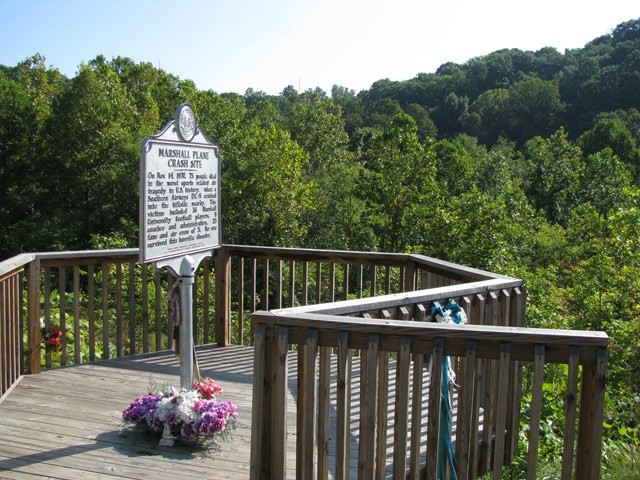
Local news article from November 16, 1970.
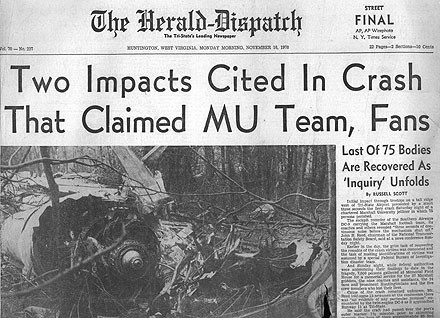
Aerial view of crash site.
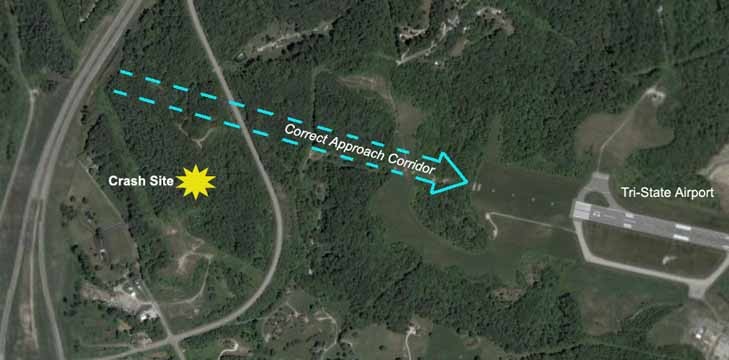
The memorial fountain in the center of campus in 1972.
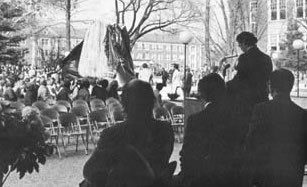
The team in 1970 before the crash.
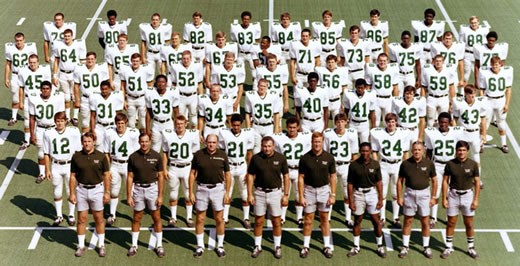
Fairfield Stadium was the home field of the Marshall football program in the 1970s.
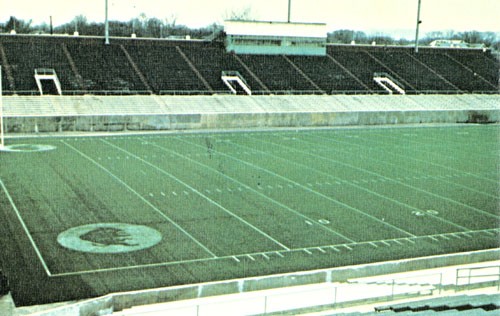
The Marshall plane crash historical marker detailing the events of the crash.
.jpg)
Backstory and Context
Text-to-speech Audio
On November 14th, 1970, thirty-seven players, nine coaches, twenty-five boosters, and a flight crew of four boarded a McDonnell Douglas DC-9 operated by Southern Airways following a tough road loss to East Carolina University. The DC-9 had only been in operation for a little over a year and had flown approximately 3,600 hours, and there were no signs of potential mechanical problems. However, poor weather conditions and fog made visibility a challenge for the flight crew shortly after the plane departed North Carolina at 6:38pm. The crew contacted the Huntington airport tower at 7:23pm and their landing was approved. Due to poor visibility, however, the plane went below the minimum descent altitude in hopes of seeing the approaching runway more clearly. When this happened, the plane struck trees on a hillside which caused the plane to crash about a mile away from the runway. There were no survivors.
“The National Transportation Safety Board determines that the probable cause was the descent below Minimum Descent Altitude during a non precision approach under adverse weather conditions, without visual contact with the runway environment. The Board has been unable to determine the reason for this descent, although the two most likely explanations are: a) improper use of cockpit instrument data; or b) an altimetry system error” (Aircraft Accident Report, NTSB-AAR-72-11, p. 36).1
The horrific crash left a university, a city, and many families in mourning. A memorial service was held on Sunday, November 15, 1970 at 7:00 pm, the same time Marshall University was scheduled to play rival Ohio University. An annual memorial service is held on campus on November 14th, the anniversary of the crash, when time stands still as the Memorial Fountain is turned off in honor of these Sons and Daughters of Marshall. The fountain is not turned back on until the following Spring.
Following the crash, the Marshall University football team was only left nine players and athletic leaders decided to suspend the program indefinitely. After the memorial, members of the Marshall community explored the possibility of rebuilding the team, an idea that slowly gained support despite the obstacles involved, including a rule that barred freshmen students from playing in NCAA games at that time. Thanks to an NCAA waiver to allow freshmen to play in Marshall's first season, the team was able to recruit players and return to the field in 1971. The team won only two games that year, but the team's first home game following the crash ended with a 15-13 victory over Xavier University. The symbolic victory transcended athletic competition and initiated a tradition where the Marshall football team began to represent something greater than sport.
This historic marker is one of many physical reminders of the tragic crash and resilience of the community and university. In the center of Marshall University is a memorial fountain, created by artist Harry Bertoia and dedicated on November 12, 1972, that is home to a ceremony to honor the lives lost on November 14th, 1970. The Marshall University student center is deemed the "Memorial Student Center", which opened in 1971. It is the hub of student life and, in 2019, an interactive displayed was installed to allow students to peruse information regarding the crash and learn more about each individual victim. There is also a cenotaph memorial at Spring Hill Cemetery in Huntington, West Virginia which lists the victims by name along the granite statue. The cenotaph was created by a committee formed by Marshall University President John G. Barker and Vice-President Donald Dedmon. At East Carolina University in Greenville, North Carolina, the school dedicated a bronze plaque on November 11, 2006. The plaque contains a bas-relief image of the fountain memorial in remembrance of the team the school once played against. At the Joan C. Edwards Stadium located at Marshall University, there is a "We are... Marshall" bronze plaque and statue depicting three football players which was installed in the year 2000 and was dedicated to the lives lost.
Sources
Brown, Lisle and Floyd J Csir. “Memorial of the 1970 Marshall University Football Team Plane Crash - November 14, 1970 ... Remembered - Homepage.” 2006. Accessed October 8, 2016. http://www.marshall.edu/special-collections/memorial/default.asp.
"MU plane crash historical marker, Wayne County, W.Va." (2015). Marshall University Plane Crash Memorial. 111. https://mds.marshall.edu/mu_plane_crash/111
